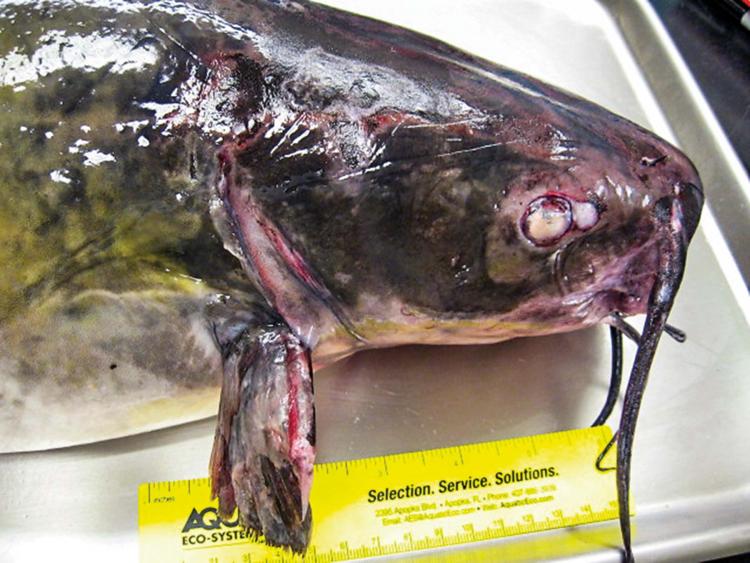Commonly Infected Wildlife
Numerous species of fish can be affected.
Is This Animal Infected?
Water molds (which are not true molds or fungi) appear as white, gray, or tan cottony growths on the skin of the fish when submerged in water.
Once out of the water, the water mold flattens and looks like a very soft, textured growth.
There are usually skin lesions underneath the growths.
Can I Get It?
No. There is no known transfer to humans.
How Bad Can It Get?
Humans are not at risk for water mold.
Symptoms in Humans
None. People are not at risk.

Protect Myself and Others
- Depending on the severity of the lesions underneath the water mold, either discard the fish properly in the trash or cut the affected area out of the fillet.
- Consume fish fillets like any other, by properly cleaning, preparing, and cooking the fish to 145°F.
Safe for Pets?
Yes. There is no known health risk when fish are properly cooked.
What Causes It?
Water molds belong to a group of fungus-like, filamentous microorganisms called oomycetes. Saprolegnia and Aphanomyces are the most frequently seen genera. They are common in water and attach easily to broken areas of a fish’s skin, especially when water temperatures are cooler.
Handling fish gently, and with wet hands, minimizes damage to their skins that could lead to infections such as water mold.





















